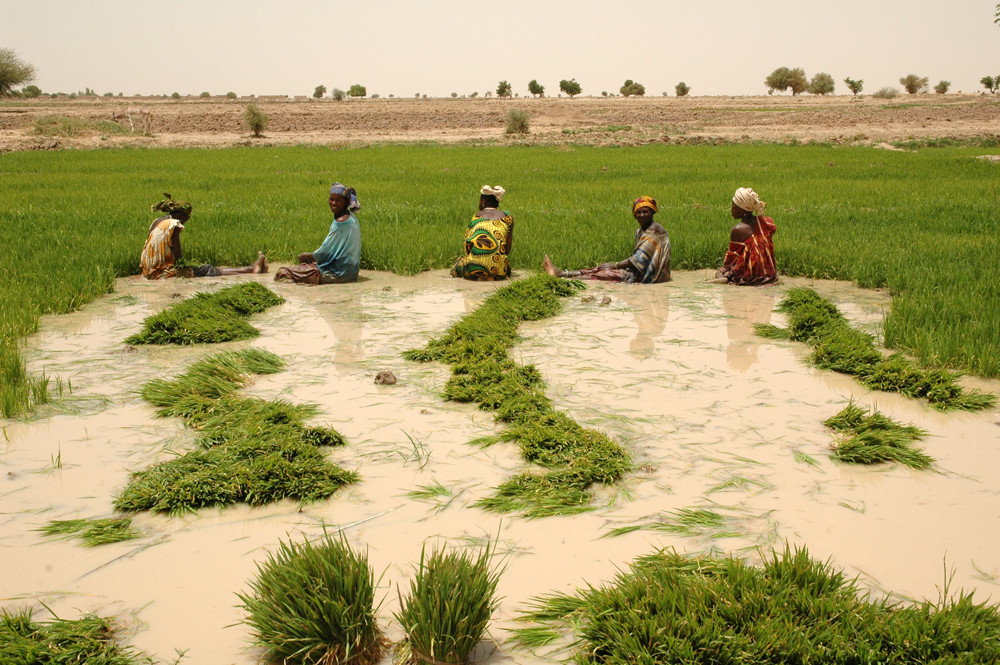(See the original from Lotus Foods)
The world’s global rice supply is literally produced on women’s backs. Women growing rice is the largest single livelihood activity in the world.
Women are thus central not just to sustaining global food security and nutrition, but also for the environmental management of a large portion of the world’s cultivable land.
Women generally do the arduous, back-breaking repetitive work of uprooting and transplanting seedlings, weeding and harvesting.
Rice is mostly grown under flooded conditions and mainly in the wet or summer season, requiring women to work long hours under the hot sun or in rain, in standing water, under unhygienic conditions, and exposed to numerous chemicals, parasites and various disease vectors.
In a cropping season, women can spend 400-500 or more hours bent or sitting in standing water per acre of rice grown to uproot seedlings from flooded nurseries, transport them to main fields, transplant them and weed the fields. Check out this photo of women uprooting rice seedlings in Mali! They sit this way for days and days. Photo by Erika Styger.

The work and exposure to diseases and chemicals in the flooded fields leads to chronic and acute illness, which undermines the health and welfare of women around the world, and thus also agricultural productivity and food security.
They also have to tend other crops or livestock, collect wood and water, cook, care for family, and sometimes do wage labor or market small products.
Women are taking on ever more responsibility in managing rice production as more men seek work off-farm to generate needed household income, a process characterized as the ‘feminization of agriculture’.
Current private and public sector strategies to raise agricultural productivity promote more new seeds and agrochemicals, which means women’s exposure to toxic chemicals in increasing, with implications not only for their health but for that of their unborn children.
So how does MCPD/SRI disrupt this anti-women bias?
MCDP dramatically reduces the pain, drudgery and time required by women to grow rice.
Work in flooded fields is minimized or eliminated. There is a reduction in labor time (about half) and lightening of work due to fewer and younger seedlings to manage, and also a reduction in repetitive motions and time spent in bent postures. Weeding is done in an upright position with a weeder, and men are more likely to assist with weeding when there is a mechanical tool.
Women can use freed time for other domestic or farm activities, producing more profitable cash crops on land they can take out of paddy. Many women start their own small business or become farmer-leaders training others on SRI. Women using SRI/MCPD methods note an improvement in their health and diets, with more time to eat and rest. Higher incomes improve family quality of life.